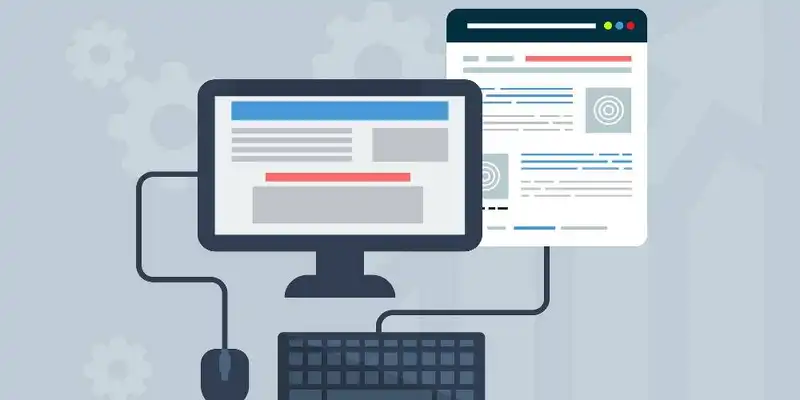Types of API Explained- How Are They Different?
There are various types of API that offer different architectural styles, communication protocols, and operating systems to satisfy a company's unique integration requirements.
Successfully implementing API integration requires extensive research to determine what model provides the best operation enhancement and user experience. First, businesses should have a general understanding of what an API is and what it offers its users.
An application programming interface (API) is software that uses a set of protocols and code translation that allows different applications to communicate with each other. This solution is able to streamline a company's daily procedures by optimizing data exchange and system functionality throughout the business. APIs also enhance external communication with clients, vendors, and customers through secure networking.
While all APIs use software integration to increase data sharing and workflow, different types are designed to optimize specific operations, depending on the organization's needs.
4 Types of Web API

A large category of this integration solution is Web APIs. This method uses the hypertext transfer protocol (HTTP) to access data on the world wide web. However, there are several subcategories of Web APIs that differ on security, client-server relationship, and policy terms. The 4 main types of Web API include-
1. Open APIs
Also known as external or public, open APIs have relaxed security measures, allowing developers and external users to access data easily. Some systems remain completely transparent, while others may require a simple registration or API key. This feature makes public APIs an excellent option for businesses that want to streamline communication with third-party users, such as vendors or clients. It also allows software developers to quickly implement components without restrictions.
2. Partner APIs
Much like the open method, partner APIs are intended to promote communication between a company and its external users. However, this method uses more security to grant data access to specific business partners. While partner APIs are often exposed to other public API platforms, third-party gateways ensure only registered servers are permitted to access information.
3. Internal APIs
Also known as private, internal APIs are hidden from external parties and used to enhance communication within an organization. With this method, companies can streamline data sharing between departments and all business locations. Although access is limited to inside operations, internal APIs still provide security measures to verify employee identity before granting entrance into the system.
4. Composite APIs
The composite API design can withstand several integration systems and combine all data. This increased functionality makes composite APIs the ideal method in microservices, where multiple services are needed to execute one operation. It also allows developers to access numerous endpoints, including web and/or other API applications, in one procedure call. The robust infrastructure of the composite API improves data service performance and provides an all-in-one solution.
4 API Protocols

Aside from security and network specification, different APIs also follow a specific set of protocols that determine what commands and data format they can accept. The 4 main sets of protocols used by web APIs include-
1. REST
Representational state transfer (REST) is more architectural rather than a protocol. This means it has to adhere to specific user interface characteristics so servers can recognize commands immediately and fulfill requests. Rather than regulating actions like protocols, REST handles document transferal. The main principles that REST API must abide by are-
- Client-Server - The client side and server application must be independent of each other, so changes at one endpoint don't affect the other
- Cache - The platform should be able to cache, or temporarily retain, responses to increase service speed and enhance user experience.
- Layered - Supporting a layered architecture allows APIs to communicate either directly with the server or through an application chain.
- Stateless - Being stateless ensures that no client information is stored on the server.
- Uniform Interface - Allowing clients and servers to communicate using various data formats such as HTTP, URIs, CRUD, or JSON improves information sharing.
2. XML-RPC
Remote procedure call (RPC) is the oldest and simplest protocol used in APIs. This type of protocol was originally intended for the client to create codes on a server. However, XML-RPC uses eXtensible Market Language (XML) to encode commands.
3. JSON-RPC
Very similar to the XML method, JSON- RPC uses the Javascript Object Notation (JSON) format to transfer data. With either RPC method, the strict data formatting requirements make it very difficult for developers to make any updates. Therefore, if any changes need to be made, developers must sift through the RPC's documentation to ensure that adding components won't disrupt other servers.
4. SOAP
Simple object access protocol (SOAP), like REST, is a web API that standardizes how applications network. This protocol accepts HTTP, SMTP, TCP, and other independent programmings to widen their availability to businesses. SOAP also seeks to define message structures and communication methods through the Web Services Definition Language (WSDL). This allows the process to publish a machine-readable document to define endpoints and procedure details.
When seeking an integration solution, businesses need to do a deep dive into the different types of API. A company needs to determine what line(s) of communication they want to improve and what set of protocols interacts well with their existing systems. Successful API implementation can promote data transparency and performance.





